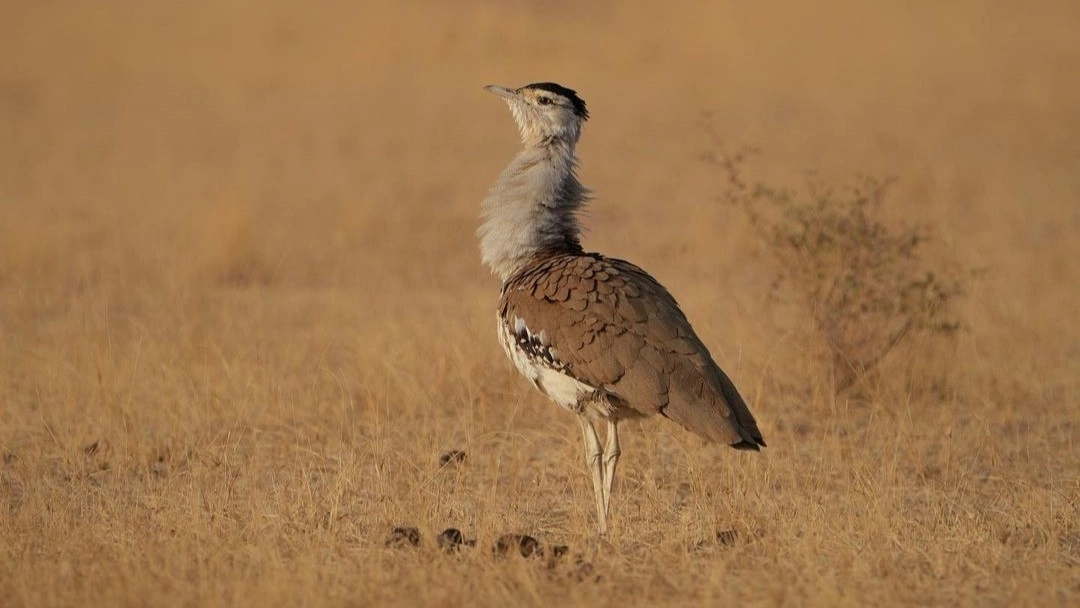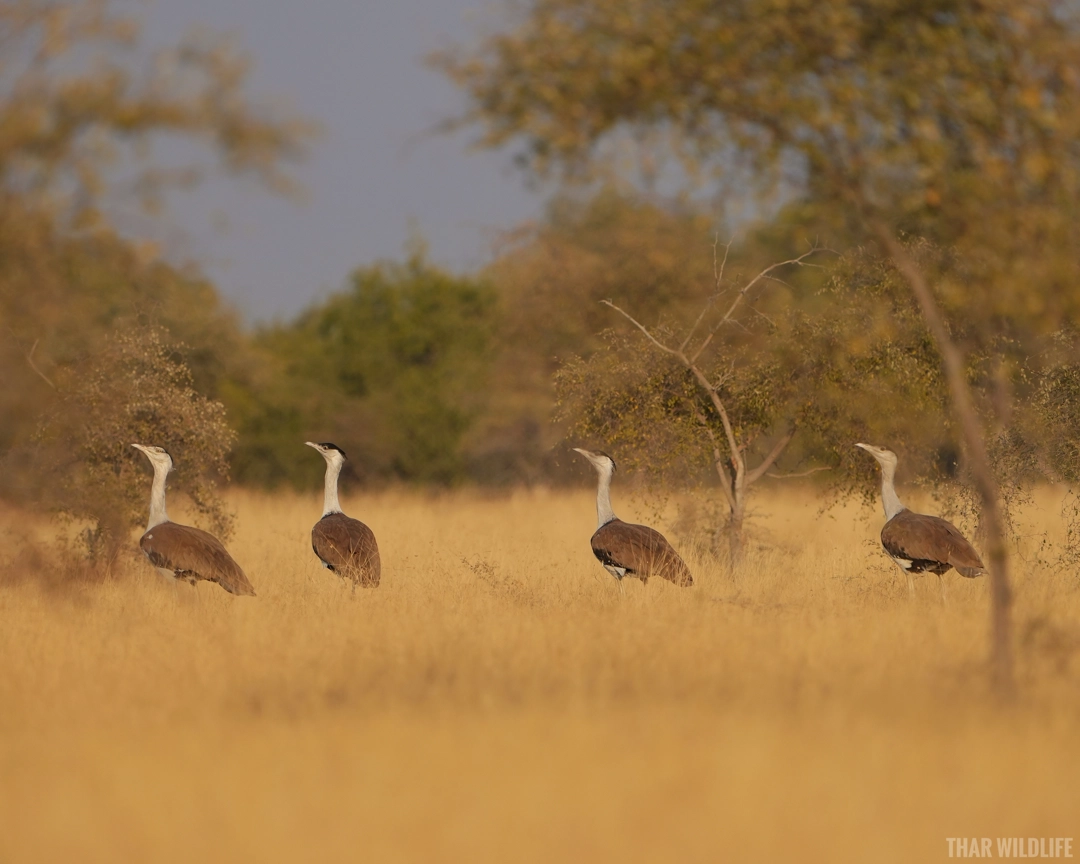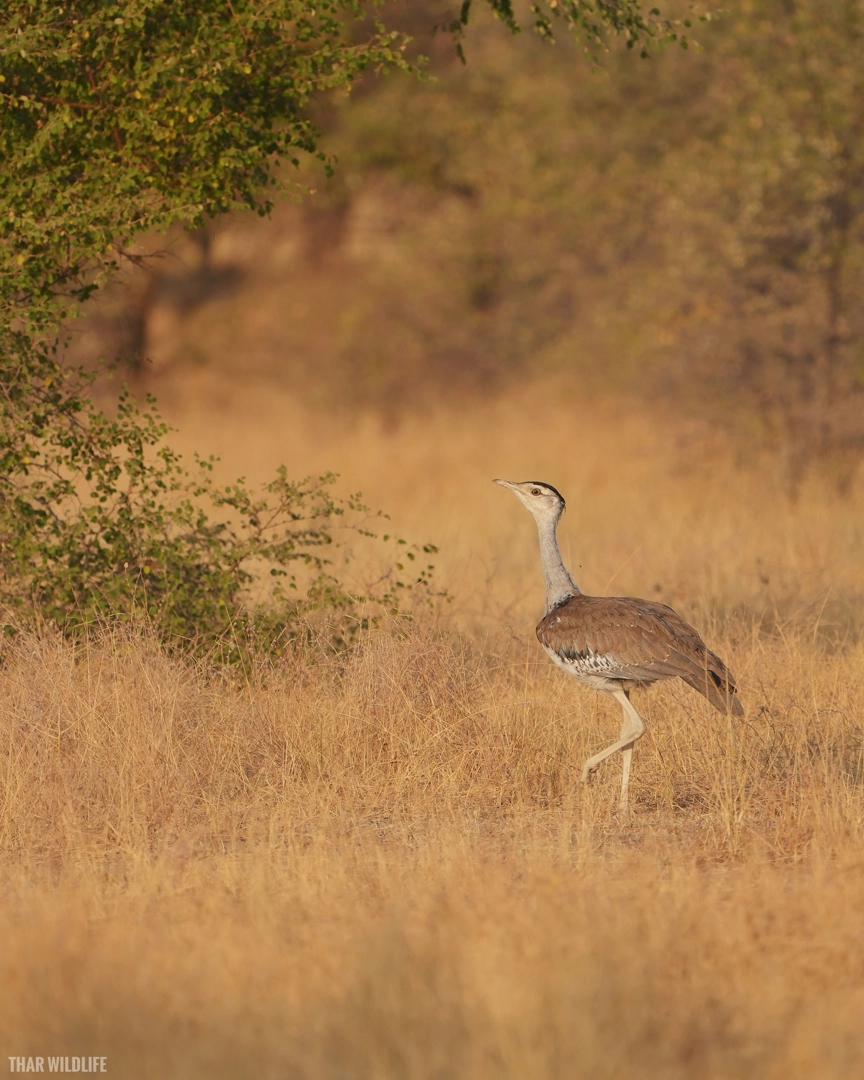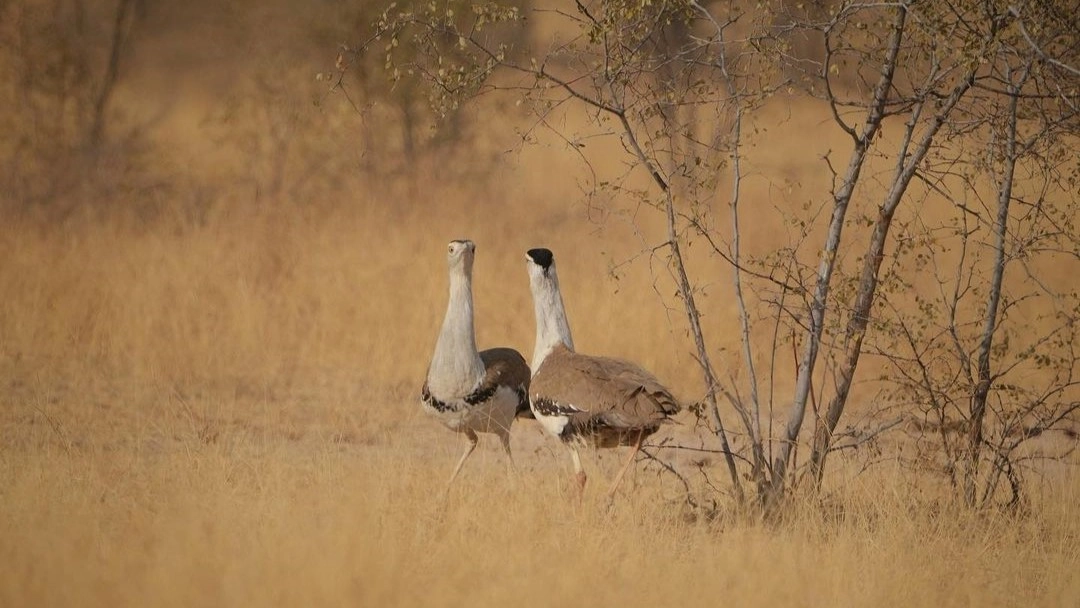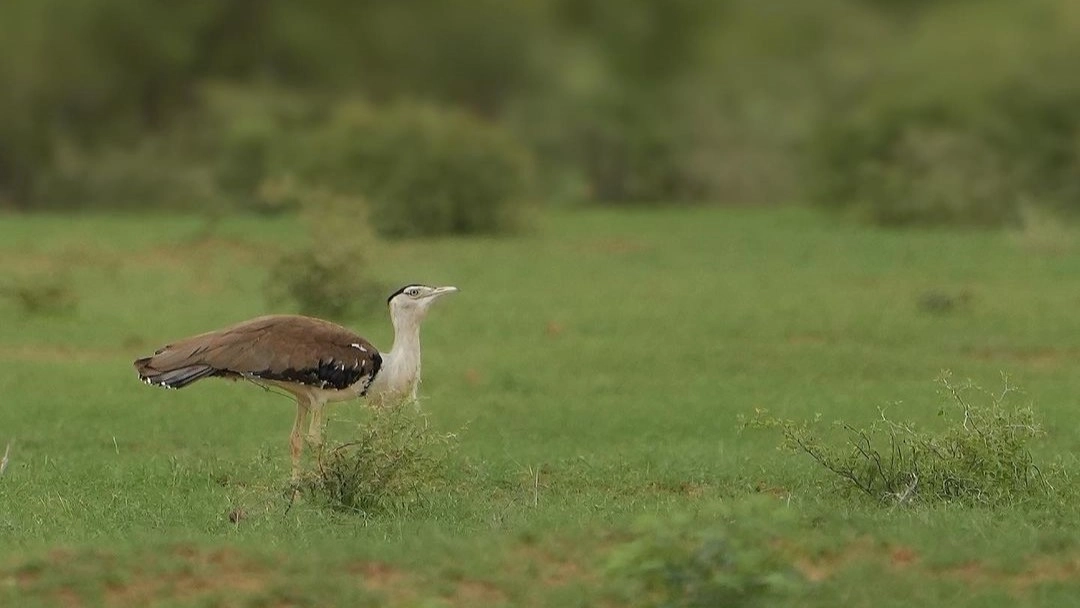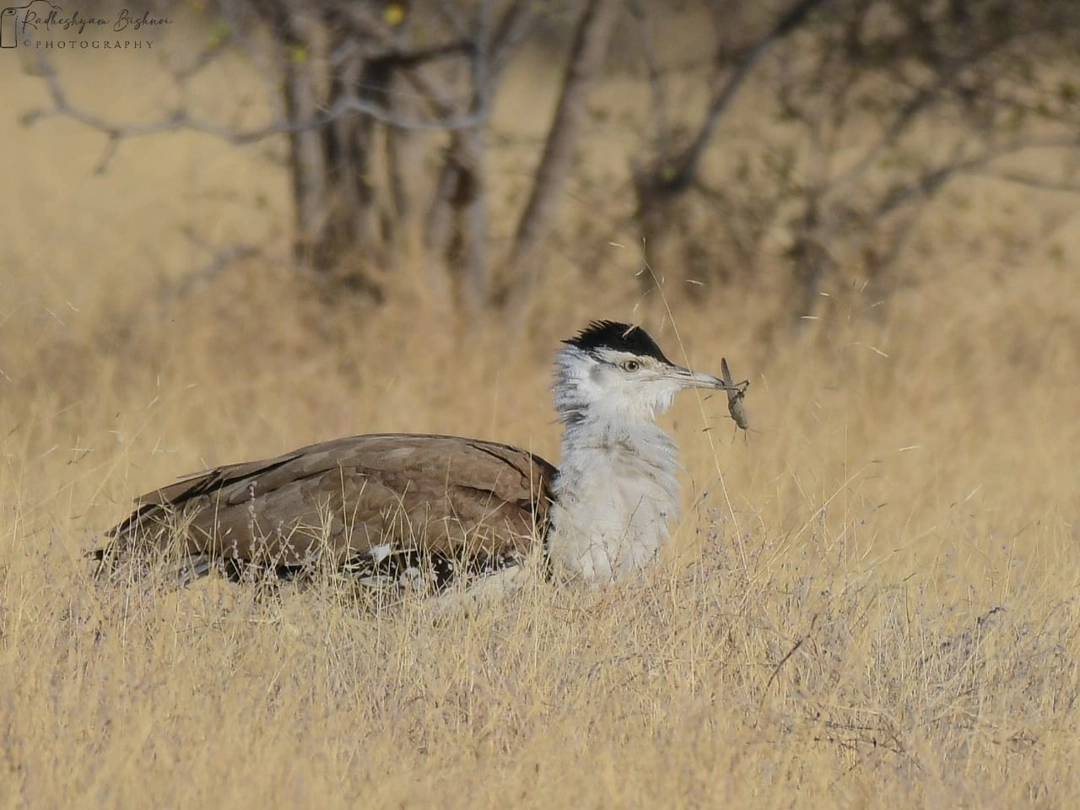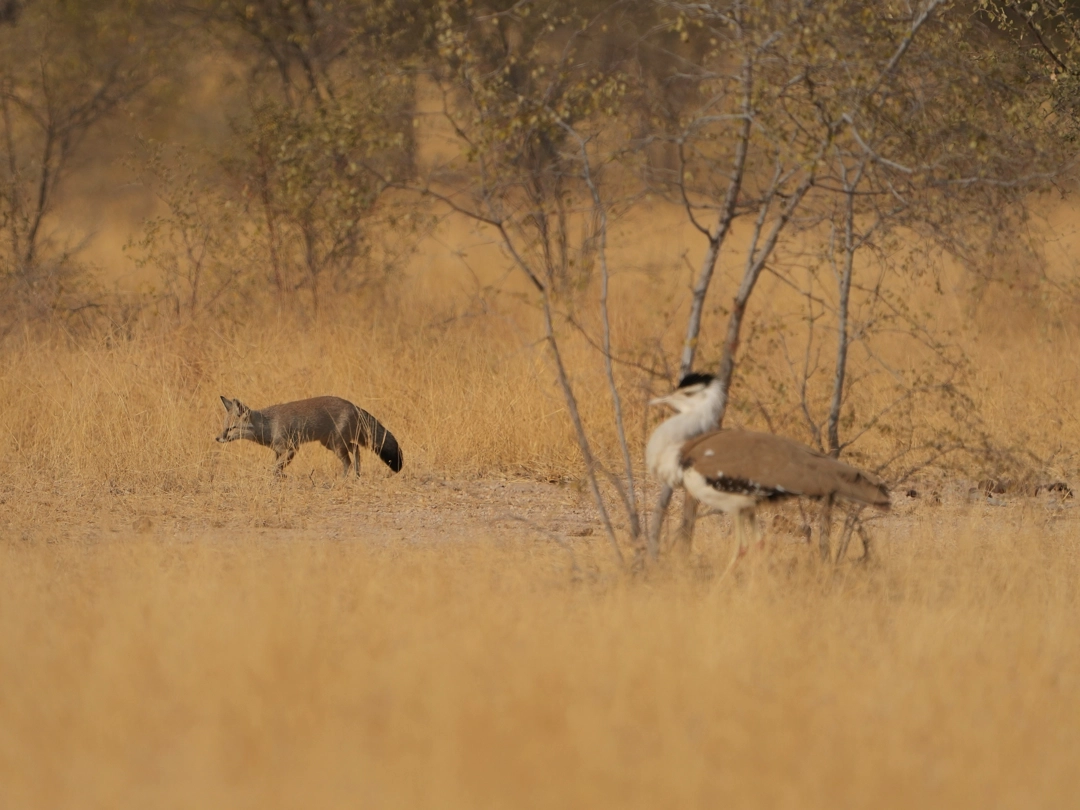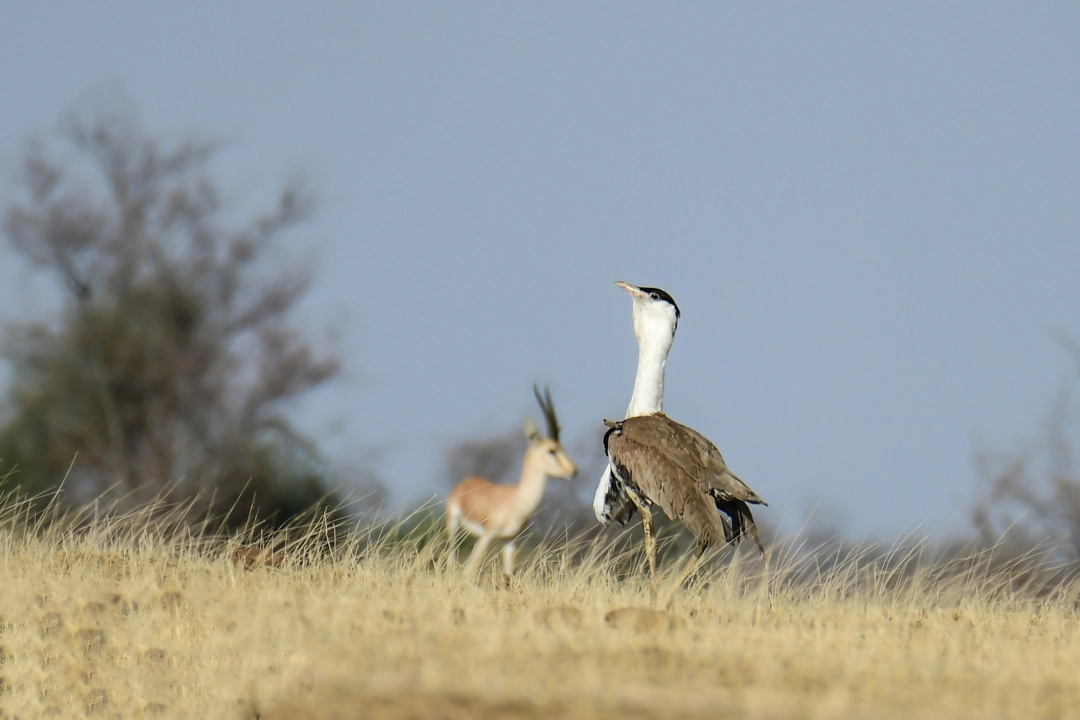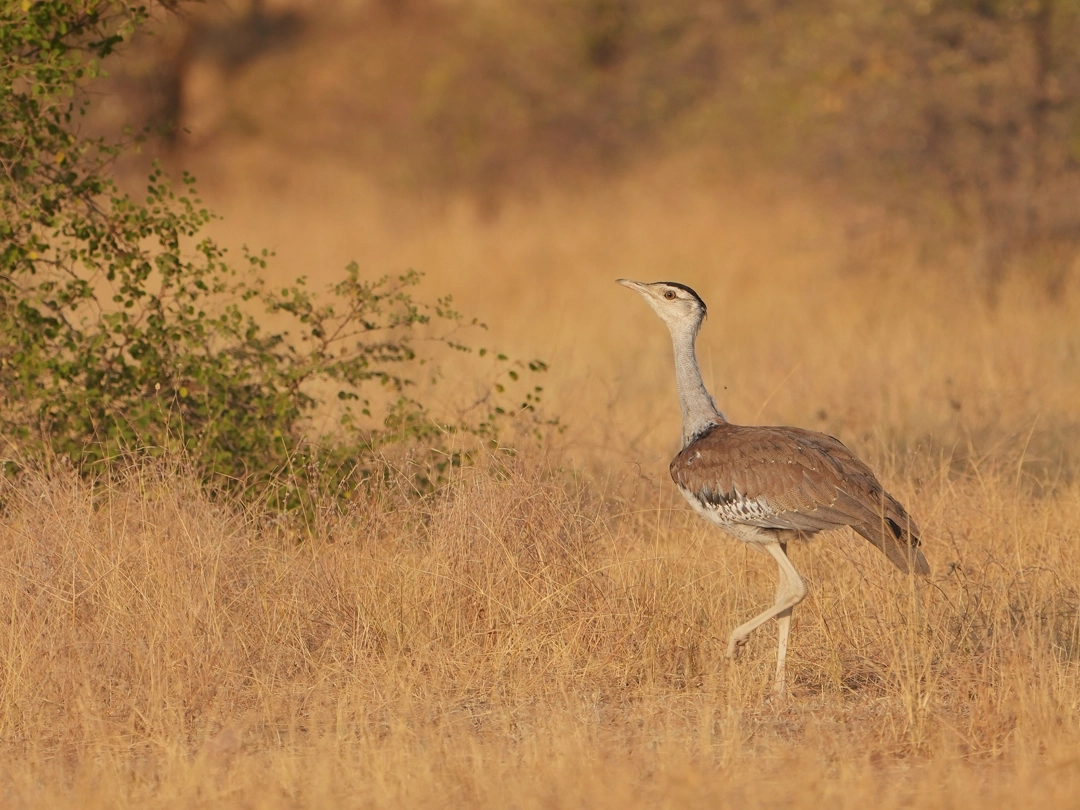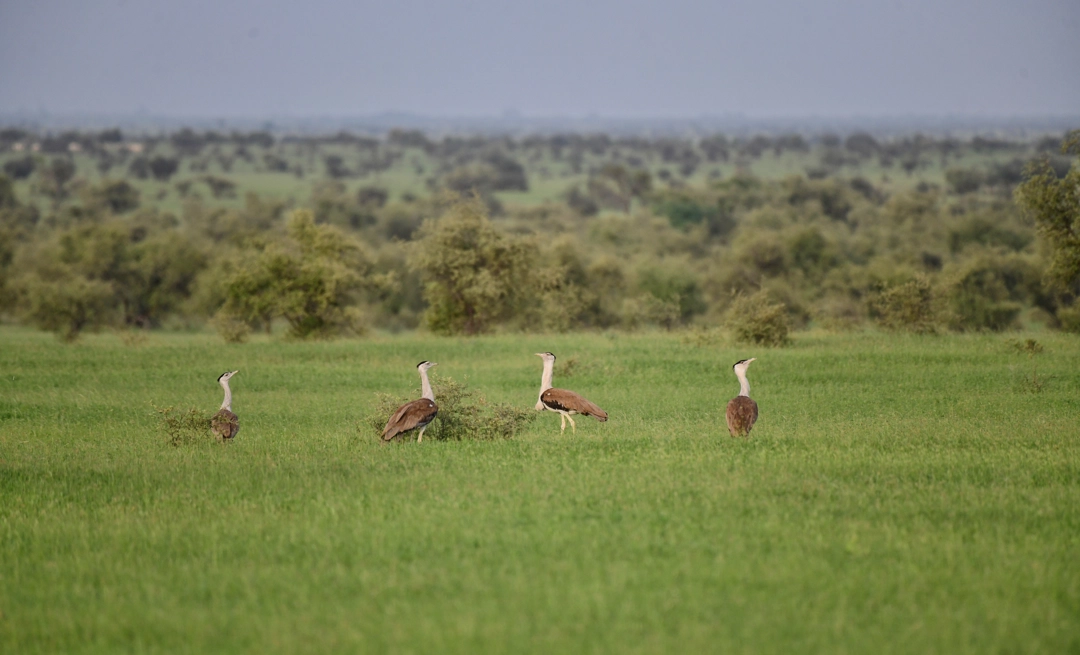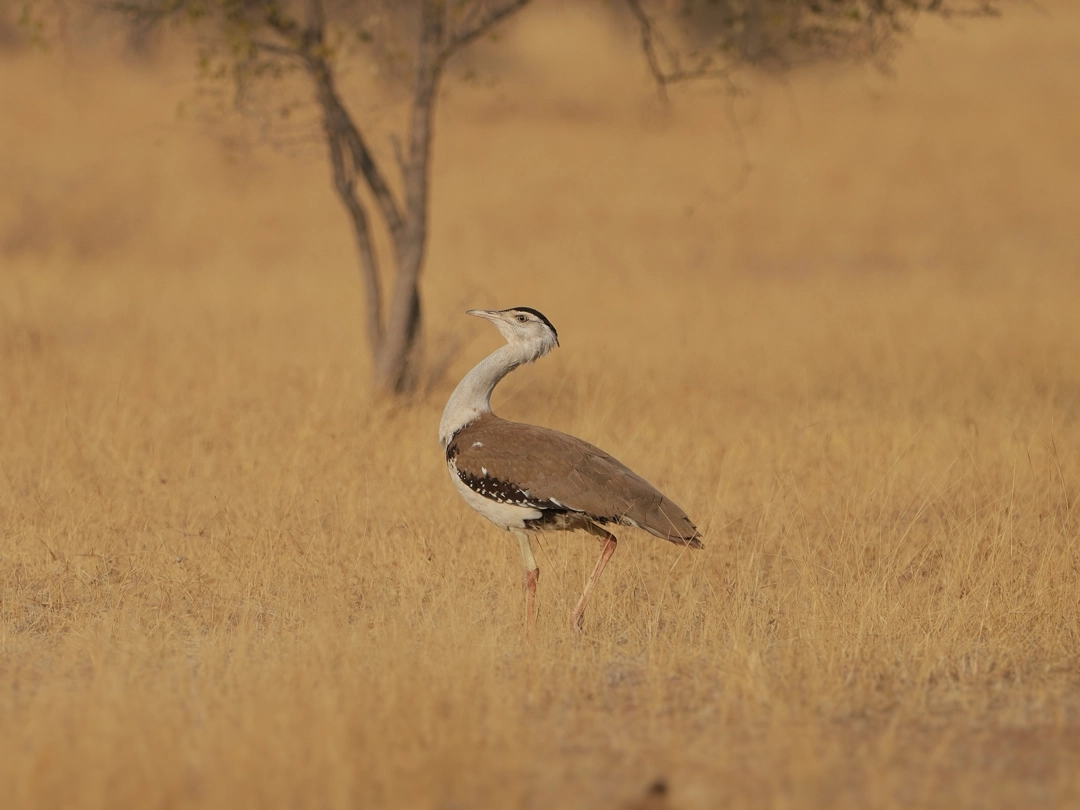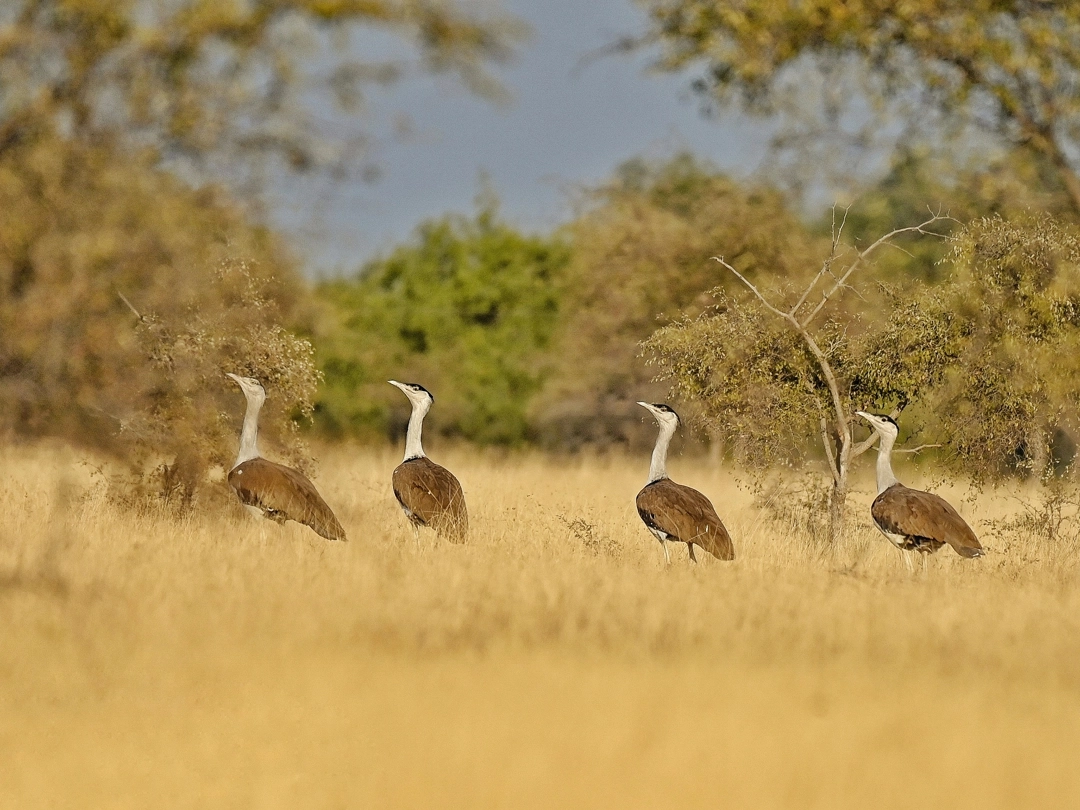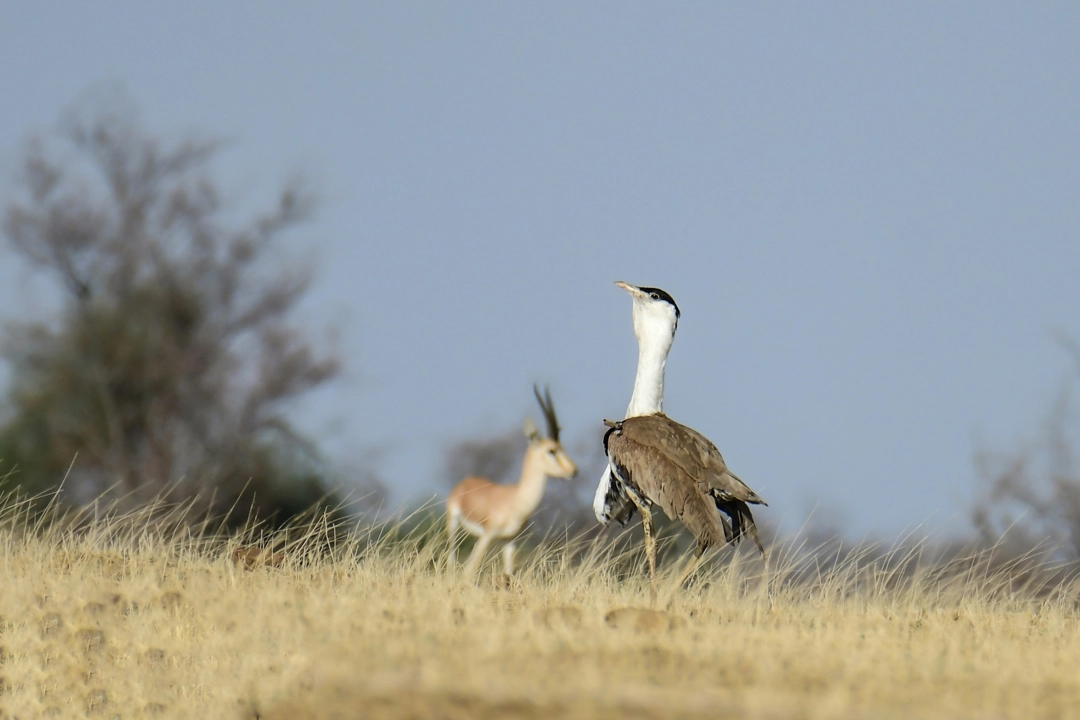The Great Indian Bustard (GIB) , locally known as the Godawan, is a large ground bird with a height of about one metre and magnificent and critically endangered bird species that once gracefully roamed the vast landscapes of India. This majestic bird, possesses striking features, with a brown and white plumage that seamlessly blends with its natural habitat, making it a true master of camouflage.
-
1. Critical Endangerment:
The Great Indian Bustard (GIB) is critically endangered, with only a few hundred
individuals remaining in the wild. This alarming decline is mainly due to habitat
loss, as the grasslands they rely on are converted into agricultural lands and urban
areas. Conservation efforts are crucial to prevent their extinction.
Despite their majestic presence, GIBs have suffered dramatic population declines over the years. In the 1960s, there were over 1,500 individuals, but today, they teeter on the brink of extinction. The urgency to save this species cannot be overstated. -
2. Habitat Loss:
GIBs depend on expansive grasslands for their survival. However, extensive habitat
loss has drastically reduced their available range. Protecting and restoring their
natural habitat is vital for their long-term survival.
The conversion of grasslands into farmlands, infrastructure development, and urbanization has left GIBs with limited areas to forage and breed. Conserving these grasslands is not only essential for the GIB but also for numerous other species that depend on this unique ecosystem. -
3. Poaching and Predation:
GIBs face threats from poaching for their feathers and body parts, as well as
predation by feral dogs. These factors contribute to their declining population and
must be addressed through stringent anti-poaching measures.
Poaching for their striking plumes, which are unfortunately sought after in the black market, remains a significant threat. Additionally, the encroachment of feral dogs into their habitats poses a grave danger to their nests and chicks. -
4. Collision with Power Lines:
Collisions with high-tension power lines are a significant cause of GIB mortality.
Efforts to mitigate this threat include the installation of bird diverters and the
undergrounding of power lines in critical areas.
The GIB's flight patterns often lead them perilously close to these power lines, resulting in fatal collisions. Conservationists and authorities are working together to make these landscapes safer for the birds. -
5. Conservation Initiatives:
Various governmental and non-governmental organizations, including Radheshyam Pemani
Bishnoi, have launched conservation initiatives aimed at protecting the GIB. These
efforts involve habitat restoration, community engagement, and raising awareness
about the bird's plight.
Collaborative projects are underway to safeguard the GIB's future. These initiatives encompass not only habitat preservation but also research, captive breeding programs, and community education to foster coexistence. -
6. Importance as a Flagship Species:
The GIB serves as a flagship species for conservation in India, drawing attention to
the need for preserving the unique biodiversity of the region. Its survival is
indicative of the overall health of grassland ecosystems.
Protecting the GIB goes beyond safeguarding a single species. It symbolizes our commitment to preserving the entire ecosystem, including the countless other plants and animals that call these grasslands home. -
7. Role in Ecosystem:
GIBs play a crucial role in maintaining the balance of grassland ecosystems. They
help control insect populations, disperse seeds, and contribute to the overall
health of these habitats.
As omnivores, GIBs are key players in maintaining the delicate balance of their ecosystems. By controlling insect populations and aiding in seed dispersal, they actively contribute to the vitality of these unique habitats. -
8. Global Significance:
The conservation of GIBs is not only important for India but also holds global
significance. It reflects our commitment to preserving endangered species and the
ecosystems they inhabit.
The GIB's conservation resonates with the broader global effort to protect endangered species and conserve threatened ecosystems. Their survival is a testament to our collective responsibility towards the planet's biodiversity. -
9. Awards and Recognition:
Radheshyam Pemani Bishnoi's dedication to GIB conservation has earned him
recognition and awards from prestigious organizations. His efforts inspire others to
join the cause.
Radhe's tireless work and commitment to GIB conservation have not gone unnoticed. He has received accolades and awards that highlight the importance of his efforts in the field of wildlife preservation. -
10. Call for Urgent Action:
The precarious status of the GIB calls for immediate and sustained conservation
action. Collaborative efforts, along with increased public awareness, are essential
to secure the future of this magnificent bird species.
The time for action is now. The fate of the GIB rests in our hands, and it's a responsibility we all share. Through collective efforts and a renewed commitment to conservation, we can ensure that this iconic bird continues to grace our grasslands for generations to come.
Brief about GIB
| Common Name | Great Indian Bustard |
|---|---|
| Local Name | Godawan |
| Scientific Name | Ardeotis nigriceps |
| Family | Otididae |
| Other Names | Godawan, GIB |
| Size | Adults: 90 to 120 cm (height), Wingspan: 210 to 250 cm |
| Habitat | Grasslands, savannas, dry plains |
| Distribution | Once widespread in India, now restricted to small populations in Rajasthan, Gujarat, Maharashtra, Andhra Pradesh, and Karnataka |
| Main Threats | Habitat loss, poaching, power line collisions, and disturbance |
| Primary Diet | Seeds, insects, small rodents, and reptiles |
| Reproduction | Monogamous pairs, solitary nesting in tall grass |
| Lifespan | Up to 15 years |
| Importance | Indicator species for grassland ecosystems, crucial for maintaining ecological balance |
| Conservation Efforts | Habitat protection, community engagement, anti-poaching measures, captive breeding programs, and research initiatives |
| Population Trends | Drastic decline from over 1,500 individuals in the 1960s to a few hundred today |
| Legal Protection | Protected under India's Wildlife Protection Act, 1972 |
| Flagship Species | Symbolizes the conservation of India's unique biodiversity and grassland ecosystems |

